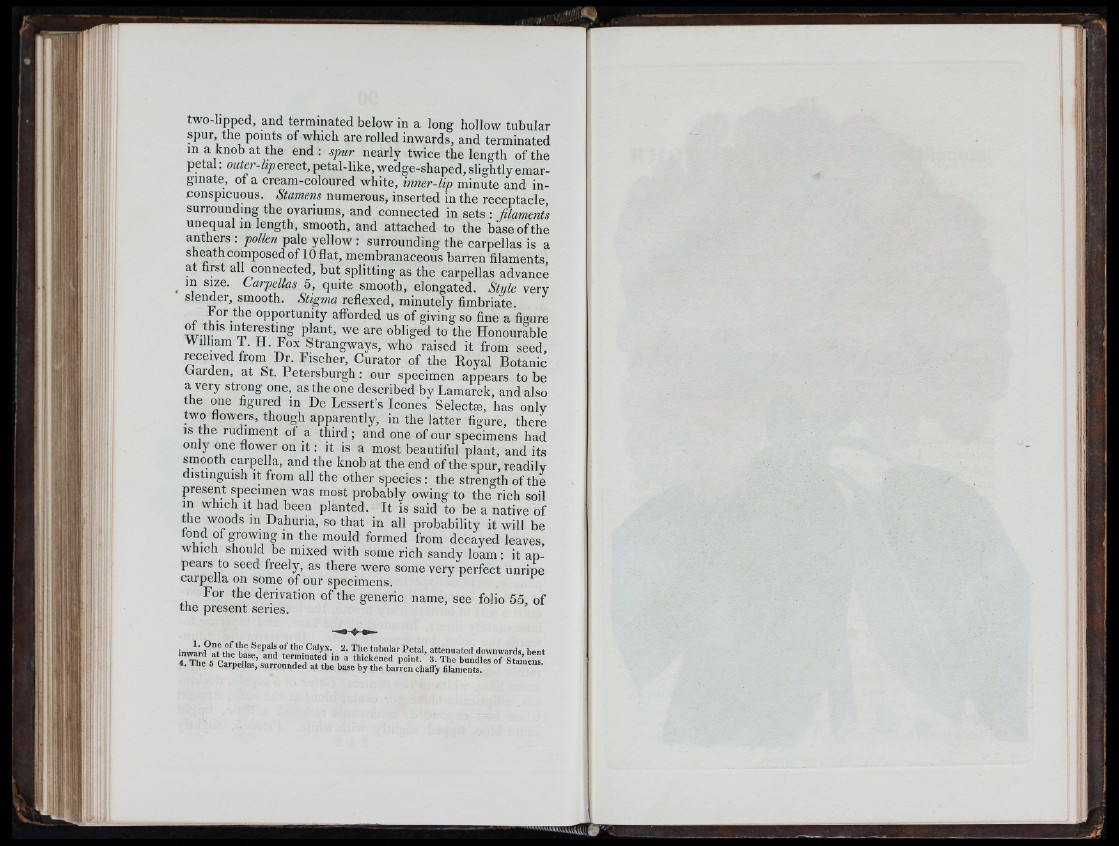
two-hpped, and terminated below in a long hollow tubular
spur, the points of which are rolled inwards, and terminated
m a knob at the end: spur nearly twice the length of the
petal: outer-lip oxect, petal-like, wedge-shaped, slightly emarginate,
of a cream-coloured white, inner-lip minute and inconspicuous.
Stamens numerous, inserted in the receptacle,
surrounding the ovariums, and connected in sets : filaments
unequal in length, smooth, and attached to the base of the
anthers : pollen pale yellow : surrounding the carpellas is a
sheath composed of 10 flat, membranaceous barren iilaments,
at first all connected, but splitting as the carpellas advance
^ in size. Carpellas 5, quite smooth, elongated. Style very
slender, smooth. Stigma reflexed, minutely fimbriate
bor the opportunity aiforded us of giving so fine a figure
this interesting plant, we are obliged to the Honourable
William i H. box htrangways, who raised it from seed,
received froin Dr. Fischer, Curator of the Royal Botanic
uarden, at bt. Petersburgh: our specimen appears to be
a very strong one, as the one described by Lamarck, and also
the one figured in De Lessert’s Icones Selectm, has only
two flowers, though apparently, in the latter figure, there
is the rudiment of a th ird ; and one of our specimens had
only one flower on i t : it is a most beautiful plant, and its
smooth carpella, and the knob at the end of the spur, readily
distinguish It from all the other species : the strength of the
present specimen was most probably owing to the rich soil
in which It had been planted. It is said to be a native of
the woods in Dahuria, so that in all probability it will be
fond of growing in the mould formed from decayed leaves,
which should be mixed with some rich sandy loam : it appears
to seed freely, as there were some very perfect unripe
carpella on some of our specimens.
For the derivation of the generic name, see folio 55, of
tne present series.
in w ld a t thp L H f attenuated downwards bent
4 T h e s T l r n e l f ’ in a thickened point. 3. The bundles o f S t a m e l
4. The 5 Carpellas, snrrounded a t the base by the b arren chaffy filaments.